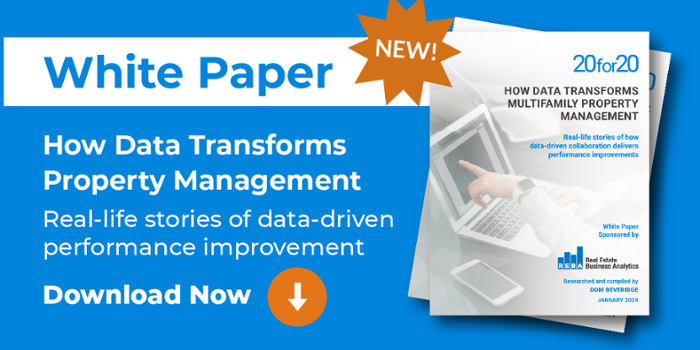
It's a brand new year, and with it comes an opportunity for a fresh take on a familiar theme. Readers of this blog will be familiar with the view that multifamily technology vendors often approach their products incorrectly. Specifically, in their eagerness to identify the key selling points for their technology, they often overlook the main reasons why companies buy their products.
I spend a lot of time talking to property management leaders, trying to understand what's consequential in their decisions to roll out technology. The insights that you get from asking the right questions rarely align with the claims you find on vendor websites.
Technology providers who understand what property management companies are trying to change in their businesses (rather than looking for the impressive-sounding talking point) are usually the ones who can craft the most persuasive story and, consequently, secure the sale.
But there are cases where the multifamily operator also lacks clarity on the why of the technology projects they are considering. This article elaborates on a fascinating example where this appears to be the case.
Multifamily's curious history with data and analytics
Business intelligence (BI) is a classic example of a technology that the industry has not universally grasped. Over the last few years, the 20for20 white paper has highlighted the peculiar adoption pattern of BI in multifamily. Companies typically go without for as long as possible, using the reporting capabilities in their software, along with a lot of Excel.
From there, they often graduate to the BI package provided as part of their property management system. Eventually, as their needs outgrow these basic platforms, they take on the substantial project of developing their own in-house business intelligence platforms.
That—rather circuitous—path toward the analytical end-state has been the same for years. Companies follow this pattern partly because they don't have a clear vision of the why behind data and analytics. They want better capabilities, but the specifics of what they will change about the business are perhaps not as widely understood.
The experience of struggling with suboptimal analytics teaches companies what they can't find out from their data and ultimately motivates them to build their own platforms. I've spent much of the last few months with property managers who have recently upgraded their BI capabilities to find examples of the tangible things changed about their businesses. And interestingly, the conclusions I've reached aren't what anyone might have expected.
The currency of collaboration
The transformation companies experience with BI isn't just about getting a specific report, set of data points, or integrating more data sources into one platform—though these outcomes are all important. The profound change comes from how data enables levels of collaboration that would not have been possible before they upgraded their analytics.
Today, we release a major new whitepaper in collaboration with Real Estate Business Analytics (REBA). The paper is a collection of stories from across property management, from maintenance to marketing, from asset management to budgeting, and much more. It explores how data supports various types of analysis and decision-making processes. But the key takeaway is when key performance indicators (KPIs) and their contributing factors become easy to customize and track, it changes how organizations work.
The paper describes (through many examples) three dimensions of collaboration: within teams, between teams, and between the corporate and property teams. Each dimension requires different decisions and involves different actors. They all improve through the KPIs enabled by their BI. When individuals and teams within an organization can align around the same KPIs and clearly understand the factors contributing to them, it delivers a step-change in planning, ownership, and, ultimately, performance.
To put it another way, when companies master BI, KPIs become the currency of collaboration. They become everyone's focus, and that improves the organization's ability to deliver results. This insight was not at all obvious to me until I heard property managers describe the many examples of what had changed in their businesses. But that's why it's worth spending the time asking the right questions!
Photo by Miguel Á. Padriñán on Pexels



